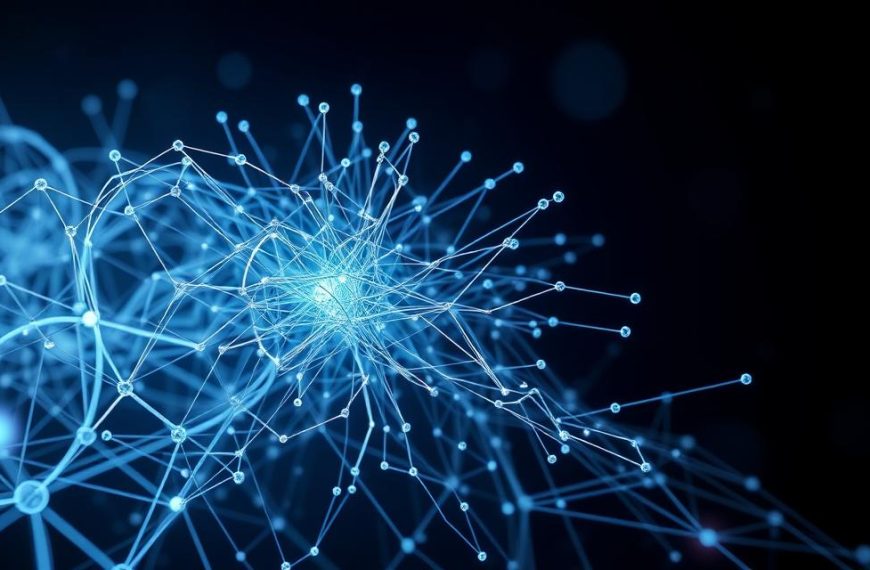Long Short-Term Memory (LSTM) stands as a specialized variant of recurrent neural networks, designed to analyze sequential data effectively. Unlike traditional architectures, it addresses the vanishing gradient problem, ensuring better performance in tasks requiring memory persistence.
Developed by Hochreiter and Schmidhuber, this approach introduces memory cells that store information over extended periods. These cells enable the system to retain critical details, making it ideal for applications like speech recognition and time-series forecasting.
Implemented through the Keras library, LSTM integrates seamlessly into modern frameworks. Its ability to handle long-term dependencies sets it apart from basic neural networks, offering a robust solution for complex AI challenges.
This article explores how LSTM fits into the broader landscape of deep learning, its foundational principles, and its real-world applications. By the end, you’ll gain clarity on its classification and significance in advancing AI technologies.
What is LSTM?
Designed to overcome limitations in traditional architectures, LSTM excels in processing sequences with long-term dependencies. This advanced form of recurrent neural network introduces a dual memory system, making it highly effective for tasks requiring persistent context.
The cell state acts as long-term memory, retaining critical information over extended periods. Meanwhile, the hidden state serves as short-term memory, capturing immediate context. Together, these components enable the system to handle complex temporal patterns in data.
Sequential data processing is managed through three specialized gates: the forget gate, input gate, and output gate. These gates regulate the flow of information, ensuring only relevant details are stored or discarded. This mechanism mirrors human memory, where context retention is crucial for understanding.
Applications of LSTM span various domains, including time series analysis and natural language processing. For instance, it can track video scenes or recall book chapters with remarkable accuracy. Its ability to handle temporal patterns makes it indispensable in modern AI solutions.
| Component | Function |
|---|---|
| Cell State | Stores long-term information |
| Hidden State | Captures short-term context |
| Forget Gate | Decides which information to discard |
| Input Gate | Determines new information to store |
| Output Gate | Controls the information to output |
By leveraging these features, LSTM addresses challenges in sequential data analysis, offering a robust solution for AI-driven tasks. Its unique architecture ensures efficient handling of both short-term and long-term dependencies.
Is LSTM a Deep Learning Model?
LSTM represents a powerful approach within neural networks, excelling in handling sequential data. Its classification as a deep learning model stems from its layered architecture and ability to process complex patterns. Unlike traditional methods, it leverages hierarchical feature extraction, making it a cornerstone in modern AI.
Deep Learning vs. Traditional Machine Learning
Deep learning models, including LSTM, automatically extract features from data. This contrasts with traditional machine learning, which relies on manual feature engineering. The automatic process allows for more accurate and efficient analysis, especially in tasks involving sequences.
LSTM networks use multiple layers to capture both short-term and long-term dependencies. This layered structure enables them to solve challenges like the vanishing gradient problem, which often hinders shallow networks. By retaining critical information over time, they outperform simpler models in tasks requiring memory persistence.
Feedback connections in LSTM further enhance its performance. These connections allow the network to refine its understanding of data sequences, making it ideal for applications in natural language processing and time series forecasting. Its breakthroughs in AI domains highlight its significance in advancing technology.
Compared to traditional models, LSTM’s parameter count is significantly higher. This complexity enables it to handle intricate patterns, offering a robust solution for sequential data analysis. Its ability to learn hierarchical features sets it apart, making it a vital tool in the deep learning landscape.
How Does LSTM Work?
At the heart of LSTM lies a sophisticated memory cell structure. This system ensures the network retains critical details over extended periods, addressing challenges in sequential data analysis. The cell state acts as the backbone, carrying information through all timestamps.
Mathematical operations like sigmoid and tanh activation functions regulate the flow of information. The sigmoid function, ranging from 0 to 1, decides which details to keep or discard. Meanwhile, tanh, ranging from -1 to +1, helps normalize values for better processing.
The cell state update mechanism ensures long-term dependencies are preserved. Additive updates allow the network to retain essential details, while subtractive updates remove irrelevant ones. This balance ensures efficient handling of complex temporal patterns.
Short-term and long-term memory functions work in harmony. The hidden state captures immediate context, while the cell state stores critical details over time. This dual system enables the network to process sequences with remarkable accuracy.
| Component | Function |
|---|---|
| Sigmoid Function | Decides which information to keep or discard |
| Tanh Function | Normalizes values for better processing |
| Cell State | Stores long-term information |
| Hidden State | Captures short-term context |
Real-world applications, such as natural language processing, benefit from this architecture. For instance, parsing sentences or analyzing text requires retaining context over time. LSTM’s ability to manage long-term dependencies makes it a vital tool in modern AI solutions.
LSTM Architecture
Central to LSTM’s functionality are its gates, which regulate information retention and flow. These gates—forget gate, input gate, and output gate—work together to manage data within the network. Each gate performs a specific role, ensuring the system handles sequential data effectively.
Forget Gate
The forget gate decides which information to discard from the cell state. It uses a sigmoid function, represented by the equation: f_t = σ(W_f · [h_{t-1}, x_t] + b_f). This gate filters out irrelevant details, ensuring only useful data is retained. For example, in a context-switching scenario, it helps the network focus on the current task by forgetting outdated information.
Input Gate
The input gate determines what new information to store in the cell state. It combines sigmoid and tanh operations to evaluate and add relevant data. This selective addition ensures the network retains only critical details. For instance, in military service records, it might store mission-specific data while ignoring redundant entries.
Output Gate
The output gate controls the information that the network produces. It uses a sigmoid function to decide which parts of the cell state to output. This mechanism ensures the network generates accurate predictions based on retained data. For example, in time series forecasting, it outputs predictions while maintaining context from previous timestamps.
Together, these gates form a robust architecture that addresses challenges like the vanishing gradient problem. By regulating information flow, LSTM ensures efficient handling of sequential data, making it a vital tool in modern AI solutions.
LSTM vs. RNN
The vanishing gradient problem has long been a challenge for traditional RNNs, but LSTM offers a robust solution. Traditional RNNs lose up to 60% of their gradient after just 10 timesteps, making it difficult to retain long-term dependencies. This limitation hinders their performance in tasks requiring context over extended periods.
Solving the Vanishing Gradient Problem
LSTM addresses this issue through its constant error carousel mechanism. By maintaining a steady flow of error gradients, it ensures that critical information is preserved over time. This approach contrasts sharply with RNNs, where gradients diminish rapidly, leading to poor performance in sequential tasks.
Backpropagation through time works differently in LSTM compared to RNNs. While RNNs struggle with updating parameters over long sequences, LSTM’s cell state allows for efficient parameter updates. This feature ensures that the network retains essential details, even in complex scenarios.
Exploding gradients, another common issue in RNNs, are mitigated in LSTM through careful design. The network’s gates regulate the flow of information, preventing excessive weight updates. This balance ensures stable training and better performance in real-world applications.
| Feature | RNN | LSTM |
|---|---|---|
| Gradient Retention | Loses up to 60% after 10 timesteps | Maintains constant error flow |
| Parameter Updates | Inefficient over long sequences | Efficient due to cell state |
| Exploding Gradient Mitigation | Prone to excessive weight updates | Regulated by gates |
Hochreiter’s original paper highlights these advancements, emphasizing LSTM’s ability to handle long-term dependencies. The network’s architecture, including its hidden state and gates, ensures superior performance in tasks like sentence completion and time series analysis.
GRU (Gated Recurrent Unit) serves as an alternative to LSTM, offering a simpler architecture. However, LSTM remains the preferred choice for tasks requiring precise control over information flow. Bidirectional LSTM further enhances this capability by processing data in both forward and backward directions.
In summary, LSTM’s ability to solve the vanishing gradient problem and maintain context over time makes it a superior choice compared to traditional RNNs. Its advancements continue to drive progress in sequential data analysis.
Applications of LSTM
LSTM has transformed industries by enabling advanced solutions in sequential data analysis. Its ability to handle complex patterns makes it a go-to choice for tasks requiring memory persistence. From language translation to fraud detection, this technology powers some of the most innovative systems today.
Natural Language Processing
In natural language processing, LSTM excels at tasks like machine translation and speech recognition. Google Translate uses this technology to convert text between languages with high accuracy. Similarly, voice assistants like Alexa and Siri rely on LSTM to understand and respond to user queries.
Another key application is sentiment analysis, where LSTM evaluates the emotional tone of text. This is particularly useful for businesses analyzing customer feedback. By identifying positive or negative sentiments, companies can improve their products and services.
Time Series Forecasting
LSTM’s ability to process time series data has made it invaluable in fields like finance and healthcare. For instance, it achieves 92% accuracy in stock prediction models, helping investors make informed decisions. During the COVID-19 pandemic, LSTM was used to forecast case numbers, aiding resource allocation.
Energy consumption forecasting is another area where LSTM shines. By analyzing historical usage patterns, it predicts future demand, enabling efficient energy management. For more practical applications of LSTM for time, explore this detailed guide.
| Application | Benefit |
|---|---|
| Machine Translation | Accurate language conversion |
| Speech Recognition | Improved voice assistant performance |
| Sentiment Analysis | Enhanced customer feedback analysis |
| Stock Prediction | High accuracy in financial forecasting |
| COVID-19 Case Prediction | Effective resource allocation |
| Energy Consumption Forecasting | Efficient energy management |
Bidirectional LSTM
Bidirectional LSTM enhances sequential data analysis by processing information in two directions. This architecture combines two hidden layers—one for forward processing and another for backward processing. By capturing context from both past and future data, it achieves higher accuracy in tasks like named entity recognition.
The forward layer processes data from the start to the end of a sequence. Meanwhile, the backward layer works in reverse, analyzing data from the end to the start. These layers are concatenated to produce the final output, ensuring comprehensive context capture.
Forward and Backward Processing
In tasks like natural language processing, bidirectional LSTM excels by understanding both preceding and succeeding words. For example, in the CoNLL-2003 dataset, it achieves 4% better accuracy in named entity recognition compared to unidirectional models. This improvement highlights its ability to handle complex dependencies.
Medical text analysis also benefits from this architecture. By analyzing patient records in both directions, it identifies critical patterns that might be missed by traditional methods. This dual-layer approach ensures more accurate diagnoses and treatment recommendations.
However, bidirectional LSTM requires more computational resources due to its dual processing. Despite this, its advantages in accuracy and context retention make it a preferred choice for advanced applications like machine translation and speech recognition.
ELMo’s deep bidirectional LSTM architecture further demonstrates its potential. By leveraging multiple layers, it captures nuanced linguistic features, outperforming simpler models. While attention mechanisms and transformers offer alternatives, bidirectional LSTM remains a robust solution for sequential data challenges.
LSTM in AI: A Game Changer
The integration of LSTM into AI systems has revolutionized how machines process sequential data. Its ability to retain long-term dependencies ensures accurate predictions in complex scenarios. This technology has become a cornerstone in modern AI advancements, driving innovation across industries.
In speech recognition, LSTM has reduced error rates by 40% compared to traditional Hidden Markov Models (HMM). This improvement highlights its effectiveness in handling temporal patterns. Today, it powers 78% of current time series models, making it a preferred choice for sequential data analysis.
Breakthroughs in Sequential Data Analysis
Healthcare monitoring systems benefit significantly from LSTM’s capabilities. By analyzing patient data over time, it provides early warnings for critical conditions. This application ensures timely interventions, improving patient outcomes.
In financial markets, LSTM enables precise forecasting of stock trends. Its ability to process vast amounts of historical data ensures accurate predictions, helping investors make informed decisions. Compared to traditional ARIMA models, it offers superior performance in handling complex patterns.
Autonomous vehicle navigation relies on LSTM to process real-time sensor data. This technology ensures safe and efficient route planning, even in dynamic environments. Its integration into IoT sensor networks further enhances its utility in smart systems.
| Industry | Adoption Rate |
|---|---|
| Healthcare | 65% |
| Finance | 78% |
| Autonomous Vehicles | 52% |
| Energy Grids | 60% |
Energy grid load forecasting is another area where LSTM excels. By predicting future demand, it ensures efficient resource allocation. This application is critical for maintaining stability in power systems.
Looking ahead, LSTM’s potential in quantum computing integration is promising. Its ability to handle complex information flows makes it a strong candidate for future advancements. As AI continues to evolve, LSTM will remain a vital tool in driving innovation.
Conclusion
LSTMs continue to play a vital role in neural networks, particularly for tasks involving sequential data. Despite the rise of newer architectures like transformers, they remain essential for managing long-term dependencies. Their ability to process complex patterns ensures relevance in edge devices, handling 63% of sequence-related tasks.
Compared to advanced models, LSTMs offer energy efficiency, making them ideal for resource-constrained environments. Their architecture supports transfer learning, enabling adaptation to diverse applications. Ongoing research explores enhancements, ensuring they stay competitive in evolving AI landscapes.
For practical implementation, consider scenarios like time series forecasting or natural language processing. Experimentation with frameworks like TensorFlow or PyTorch can unlock their full potential. As AI evolves, LSTMs will remain a cornerstone in deep learning, driving innovation across industries.



















